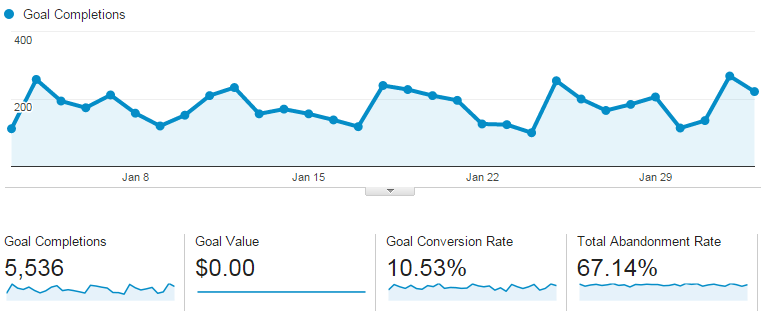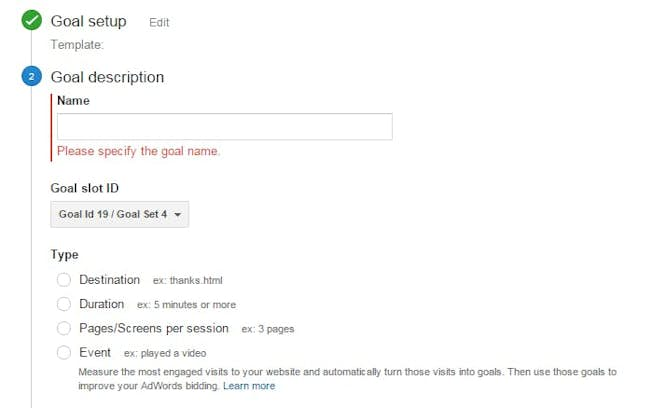What Data Is Google Analytics Goals Unable to Track: A Full Guide
What Data Is Google Analytics Goals Unable to Track: A Full Guide
Blog Article
Discover the Limitations of Google Analytics Goals: Revealing the Information Kind That Remain Untrackable
As organizations increasingly count on data-driven decision-making, comprehending the constraints of devices like Google Analytics ends up being critical. While Google Analytics Goals offer useful insights into customer communications, there exist information types that avoid monitoring, posing obstacles to an extensive understanding of customer behavior. These untrackable data kinds increase questions about the precision and efficiency of the analytics information that organizations heavily count upon for their electronic strategies. Interested to uncover the surprise blind spots in your data analysis procedure?
Incomplete User Journey Tracking
Incomplete individual trip monitoring within Google Analytics can prevent the capacity to accurately evaluate individual behavior. When the user journey is not fully tracked, there are gaps in the information that protect against an extensive understanding of just how users communicate with an internet site. This absence of insight can cause missed opportunities for optimization and improvements to the individual experience.
One typical problem with incomplete customer journey tracking is the lack of ability to see the complete course that individuals take in the past finishing an objective or leaving the website. Without this information, it is challenging to recognize where individuals might be running into barriers or friction factors that avoid them from converting. In addition, insufficient tracking can cover the impact of specific marketing initiatives or web site modifications on user actions.
To resolve this restriction, it is important to establish up appropriate tracking mechanisms within Google Analytics to capture the whole user journey. This may involve establishing event tracking, objective funnels, or making use of devices like Google Tag Supervisor to ensure that no crucial interactions go unrecorded. By gaining a comprehensive sight of the user trip, site owners can make more enlightened decisions to boost individual interaction and drive conversions.
Acknowledgment Challenges
Navigating with attribution challenges in Google Analytics requires an extensive understanding of just how various touchpoints add to the total conversion process. Acknowledgment difficulties develop from the intricacy of modern-day client journeys, where users communicate with numerous channels before converting. Google Analytics offers numerous acknowledgment versions like initial touch, last touch, and straight, each supplying a various perspective on exactly how credit report is appointed to touchpoints along the conversion path. Nonetheless, these versions may not always accurately show the true impact of each touchpoint on the conversion.
One usual attribution difficulty is the trouble in associating conversions to the right source, especially in instances where customers communicate with several channels before transforming. This can result in mistakes in identifying which advertising and marketing efforts are driving the most conversions. In addition, cross-device monitoring positions another attribution challenge, as users commonly change between gadgets throughout their journey, making it challenging to track their interactions effortlessly. Marketing experts have to carefully interpret and examine acknowledgment information to make enlightened decisions and enhance their advertising approaches effectively.
Offline Conversions
Provided the challenges associated with connecting conversions accurately in online networks, the measurement of offline conversions presents a significant possibility for marketing professionals seeking an extra comprehensive understanding of their clients' trip. Offline conversions describe actions that consumers take in the real world, such as making purchases in brick-and-mortar shops or over the phone, participating in occasions, or involving with published materials - what data is google analytics goals unable to track. These conversions are crucial for companies that operate both online and offline, as they offer beneficial insights right into the performance of marketing projects across various touchpoints
Tracking offline conversions traditionally posed a significant difficulty for marketing experts, as it was testing to attach these activities back to details online communications precisely. With advancements in innovation, such as the combination of CRM systems, distinct identifiers, and discount coupon codes, services can now bridge the gap in between online and offline information to get a much more holistic sight of consumer habits. By efficiently measuring offline conversions, marketing professionals can enhance their methods, designate resources a lot more effectively, and ultimately enhance the total client experience.
Cross-Device Monitoring
Cross-device tracking plays a critical function in understanding the interconnected nature of customers' digital communications across several devices. In today's omnichannel world, where customers effortlessly switch between smartphones, tablets, and desktop computers, tracking their behavior across these devices is important for online marketers to get a thorough view of their client trip.

Additionally, personal privacy problems and regulations such as GDPR and CCPA have even more challenging cross-device monitoring. With customers demanding more control over their data and boosted restrictions on monitoring modern technologies, marketing experts must discover privacy-compliant and innovative ways to connect user interactions across devices.
Dynamic Content Engagement
Comprehending individual interaction with dynamic web content is pivotal in enhancing digital advertising techniques for enhanced target market communication. Dynamic content refers to internet site elements that change based on customer actions, choices, or other elements, offering a customized experience. Tracking customer communications with vibrant material positions challenges for typical analytics tools like Google Analytics.
While Google Analytics can track basic communications like clicks and page sights, it may battle to record more nuanced engagements within vibrant content. what data is google analytics goals unable to track. Metrics such as time invested on certain dynamic elements, float activities, or interactions within pop-ups are usually not easily quantifiable using basic monitoring techniques. This constraint impedes marketing professionals' ability to completely grasp just how customers are involving with vibrant web content and customize their strategies as necessary

Final Thought
To conclude, Google Analytics objectives have limitations in tracking insufficient user journeys, connecting conversions properly, recording offline conversions, tracking cross-device interactions, and measuring dynamic content interaction. These restrictions highlight the value of discovering added monitoring approaches and devices to obtain an extra comprehensive understanding of user behavior and conversions past what Google Analytics can provide.
While Google Analytics Goals offer useful understandings into customer communications, there exist data types that thwart monitoring, posing challenges to an extensive understanding of individual habits.Incomplete user trip monitoring within Google Analytics can hinder the ability to precisely evaluate user habits. When the customer trip is not fully tracked, there are gaps in the information that stop a comprehensive understanding of just how users connect with a website.One common additional resources concern with insufficient individual trip tracking is the lack of ability to see the complete path that users take before finishing an objective or leaving the site. By acquiring an extensive view of the user trip, web site proprietors can make more informed decisions to boost customer engagement and drive conversions.
Report this page